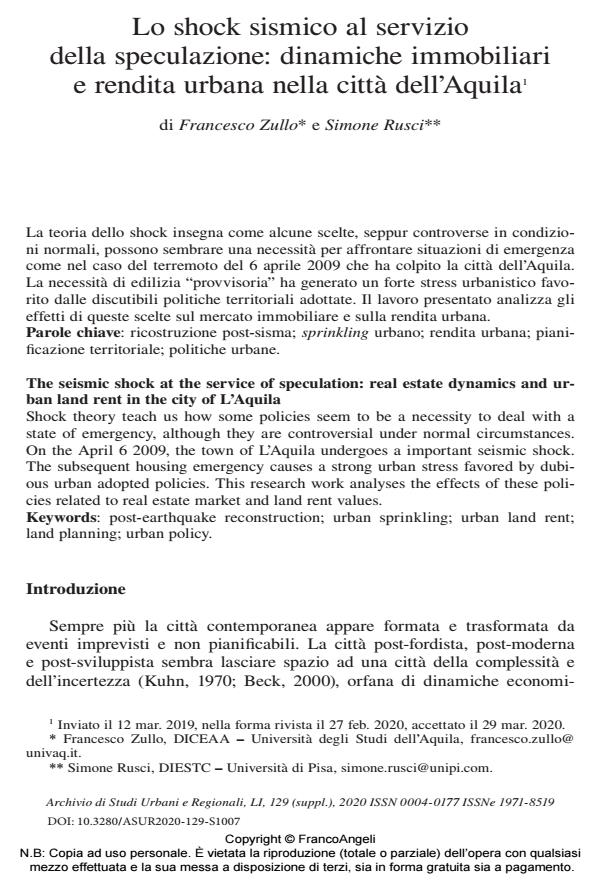The seismic shock at the service of speculation: real estate dynamics and urban land rent in the city of L’Aquila
Journal title ARCHIVIO DI STUDI URBANI E REGIONALI
Author/s Francesco Zullo, Simone Rusci
Publishing Year 2021 Issue 2020/suppl. 129
Language Italian Pages 23 P. 137-159 File size 284 KB
DOI 10.3280/ASUR2020-129-S1007
DOI is like a bar code for intellectual property: to have more infomation
click here
Below, you can see the article first page
If you want to buy this article in PDF format, you can do it, following the instructions to buy download credits

FrancoAngeli is member of Publishers International Linking Association, Inc (PILA), a not-for-profit association which run the CrossRef service enabling links to and from online scholarly content.
Shock theory teach us how some policies seem to be a necessity to deal with a state of emergency, although they are controversial under normal circumstances. On the April 6 2009, the town of L’Aquila undergoes a important seismic shock. The subsequent housing emergency causes a strong urban stress favored by dubious urban adopted policies. This research work analyses the effects of these policies related to real estate market and land rent values.
Keywords: Post-earthquake reconstruction; urban sprinkling; urban land rent; land planning; urban policy.
Francesco Zullo, Simone Rusci, Lo shock sismico al servizio della speculazione: dinamiche immobiliari e rendita urbana nella città dell’Aquila in "ARCHIVIO DI STUDI URBANI E REGIONALI" suppl. 129/2020, pp 137-159, DOI: 10.3280/ASUR2020-129-S1007